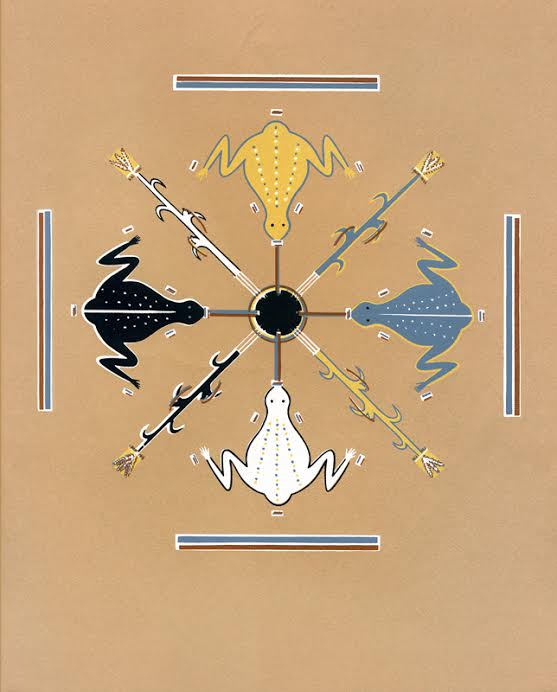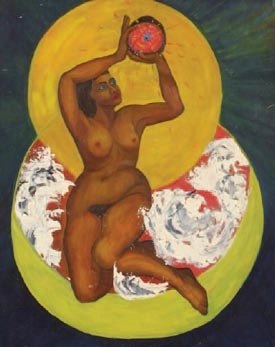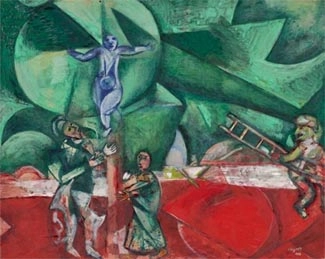ARAS Connections: Image and Archetype - 2011 Issue 2

A goal of ARAS Connections is to continually refresh the symbolic eyes of its subscribers with new material. The new material can be "old" and "new". In this edition of ARAS Connections, we present "old material" in new form. The first work featured is a wonderfully unique book by the analyst, painter, and author Katie Sanford which we are publishing electronically in its entirety. What makes this work "old" is that it presents paintings done decades ago when the Jungian tradition emphasized analysand's giving expression to intra-psychic, dynamic content through active imagination and painting. In the case of Katie Sanford, she was both an analysand and an analyst and what makes her work so remarkable is that she sat on the paintings in this book for decades before literally digging them out of her basement on her daughter's urging and reflecting on them from the perspective of time and her many years of digesting her own analytic experience. Although the "style" of the paintings may reflect another era, the content is timeless and priceless. We are very grateful to the generosity of Katie Sanford who has given us permission to publish this extraordinary document.
The second featured article of ARAS Connections is the very first contribution to the new ARAS Image/Cultural Complex Research project. This paper presents new and original reflections on how Jewish painters have used the symbolic image of the Christian crucifixion to express their own concerns and suffering, often at the hands of the very Christians who worship the suffering Christ. We are pleased to launch the occasional publication of material from the research project with this article by Carol Rizzolo. The author takes a central symbol of the Western religious tradition and explores the image in terms of the suffering of non-Christians as well as Christians. In this sense, the Jewish painters' use of Christian iconography becomes a paradoxical vehicle for exploring the virulent cultural complex of anti-Semitism.
As always, our primary concern and focus is exploring the polyvalence of the symbolic image and its capacity to move us in unexpected ways by giving expression to complex inner states of being and transformation as well as painful outer recurring historical realities.
Tom Singer, M.D.
Co-Chair of ARAS Online for National ARAS
The Serpent and the Cross

In this issue of ARAS Connections, we are honored to present a unique work by Katherine Sanford. She gives us, in the form of 62 powerful paintings, a moving record of her explorations of the unconscious psyche over a period of 30 years. In her early 30’s, forced by a serious and medically unexplainable illness, she began a long course of Jungian analysis, with intense attention to her dreams. Out of the dreams and her meditation on their mysterious images, arose these paintings and accompanying imaginative written dialogues with the dream figures.
Now, 50 years later (the first painting is dated 1959), she returns to this work, which ended in 1987, and gives us just enough commentary and interpretation that we can follow her into the uncanny world of the paintings. She includes short segments of some of her imaginative written dialogues with the personages of the paintings, and a valuable short discussion of this dialogue technique, which C.G. Jung called "active imagination."
But helpful as her commentary is, the real treasure here lies in the series of paintings, which convey wordlessly the awesome power and strangeness of the forces at play within the unconscious psyche, that are largely unknown in our everyday human life. In these paintings, we often see images of a human person in interaction with the godlike forces of the unconscious. The paintings show us that the power of our conscious will is minute in comparison with these unconscious forces, but also that developing relationship between the two elements is essential and healing.
Although depth psychology and analysis have been with us for 100 years, very few people—and fewer women—have stepped forward to show their own psychological process in its depth and wonder. We can be grateful to Katherine Sanford for her great gifts and for allowing us to witness her profound inner experience.
Read The Serpent and the Cross: Healing the Split through Active Imagination by Katherine M. Sanford in its entirety.
The Image of Crucifixion: An Exploration of the Relationship of Jewish Artists to the Passion of Christ

Anti-semitism has a persistent and virulent history of almost two-thousand years in the Western world. James Carroll has written a highly readable and informative narrative of that history in Constantine's Sword: The Church and the Jews--A History. From the perspective of the Jungian notion of cultural complexes, the history of anti-semitism in the west could be a case study as it has all of the characterisitics of a cultural complex which:
1. expresses itself in powerful collective moods and repetitive behaviors. Highly charged emotion or affectivity is the calling card of a cultural complex.
2. resists humankind's most heroic efforts to make the complex conscious as it tends to remain unconscious.
3. accumulates experiences that validate its point of view and creates a storehouse of self-affirming ancestral memories.
4. functions in an involuntary, autonomous fashion such that it affirms a simplistic point of view that replaces everyday ambiguity and uncertainty with fixed, often self-righteous, attitudes to the world.
5. expresses typically human attitudes that are rooted in primordial ideas about what is true and meaningful, making it very hard to resist, reflect upon and dismantle even if its effect is destructive over many generations.
The Image of Crucifixion was the very first submission to our new ARAS Image/Cultural Research Project and came to us within minutes of our posting the invitation to participate. One of the things that makes this paper so interesting and valuable is that it explores the crucifixion, the central symbolic image of the Christian experience, in an unusual context. In this study, the cruifixion is viewed through the eyes of Jewish painters who can be seen as reflecting on the intractable historical reality and pychological cultural complex of anti-semitism at the heart of which is the belief that the Jews are "Christ's killers."
- Tom Singer
An excerpt from The Image of Crucifixion: An exploration of the relationship of Jewish artists to the Passion of Christ by Carol L. Rizzolo, Ph.D.:
On March 28, 2008, The New York Times published the following article:
An Artist From Russia Disappears in Berlin: A prominent [Jewish] artist who had run-ins with both the church and state in her native Russia after taking part in a controversial exhibition has disappeared without a trace from her home. Ms. Mikhalchuk took part in Caution! Religion, a 2003 exhibition at Moscow's Andrei Sakharov Museum that opponents called blasphemous. (A6)
Regarding this incident, newspapers reported that men from an Orthodox church in Moscow ransacked the museum and destroyed many of the works on display. Ms. Mikhalchuk was fined by the Russian government and sentenced to two years in prison for her work. Among her "offensive images" was a re-imaging of the crucifixion; Ms. Mikhalchuk had painted a crucified woman.
Early in the twentieth century, the Russian Jewish artist Marc Chagall painted the first of his many images of the crucifixion. In 1933, the Nazi regime in Germany had all works by Chagall taken down from museums and burned. Jewish artists working with the image of the crucifixion are noteworthy for their rarity, but more importantly, they are noteworthy for the personal risk they take when re-imaging Christian icons. As common as Old Testament themes are in the works of Jewish and Christian artists alike, Jews rarely depict images of themes from The New Testament.
Since as long ago as 332 AD, in the time of Constantine, Christianity has carried with it the shadow of political perversion. Tragically, many "non-believers" have died horrible deaths as a result of political distortion of the sacred. Jews as well as other non-Christians were murdered in the name of Christianity, and yet this Christianity was not the Christianity preached by the historic Jesus. Rather, it was the misapplication of something beautiful for the purpose of political gain. Jews living in a Christian world must, by virtue of the world in which they exist, have some relationship with Christianity and with the image of Christ.
Read the entire paper.
Contents
Become a Member of ARAS!
Become a member of ARAS Online and you'll receive free, unlimited use of the entire archive of 17,000 images and 20,000 pages of commentary any time you wish—at home, in your office, or wherever you take your computer.
The entire contents of three magnificent ARAS books: An Encyclopedia of Archetypal Symbolism, The Body and The Book of Symbols are included in the archive. These books cost $330 when purchased on their own.
You can join ARAS Online instantly and search the archive immediately. If you have questions, please call (212) 697-3480 or email info@aras.org
We Value Your Ideas
As our newsletter grows to cover both the ARAS archive and the broad world of art and psyche, we're eager to have your suggestions and thoughts on how to improve it. Please send your comments to info@aras.org. We look forward to your input and will reply to every message.
Subscribe
If you're not already a subscriber and would like to receive subsequent issues of this newsletter by email at no cost, e-mail us at newsletter@aras.org.
